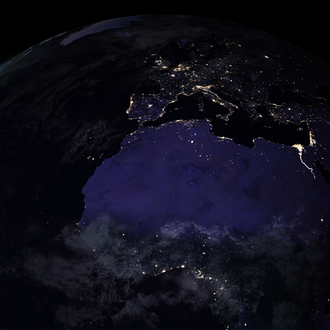Verlust der Nacht


How dark must the sky be to be able to observe the stars? How bright is the night?
The starlight 'drowns' in the sea of lights of our big cities. About half the population of Central Europe cannot see the Milky Way, even under the best observation conditions.
The carpet of lights is growing, locally and globally. But how fast and what are the driving factors? A long-term measurement campaign will lay the foundations for an empirical study to characterise night sky brightness in the Berlin/Potsdam area. Observations from the Teide Observatory on Tenerife will serve as a reference for comparison with local observations.
Commercial light sensors of the type SQM and MarkPro were installed in a measurement network in and around Berlin and provide a continuous data stream describing the course of the night sky brightness.
The project ended in 2014. A measuring device at the Babelsberg site is still active and the data is updated daily on the project website https://verlustdernacht.aip.de/.
Funding: BMBF
Partners:
Interdisziplinärer Forschungsverbund Lichtverschmutzung
